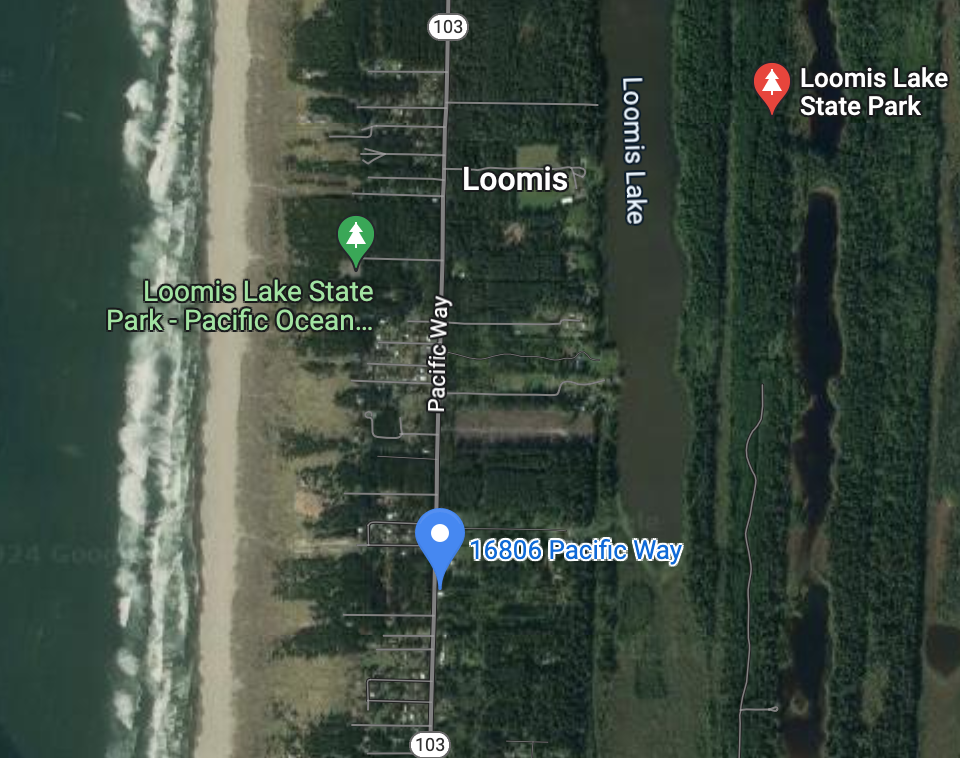Fire district moving ahead with mid-peninsula training facility
Published 6:13 pm Monday, May 20, 2024

- A training facility will soon be developed by Pacific County Fire District No. 1 at 16806 Pacific Way.
LONG BEACH PENINSULA — Good things come to those who wait, the saying goes. That’s certainly true for Pacific County Fire District No. 1, which is moving ahead with a project to develop a mid-peninsula property it purchased more than 15 years ago into a training facility for its professional and volunteer firefighters.
Trending
In April, PCFD1 solicited bids and its board formally contracted with Rognlin’s, the Aberdeen-based general contractor, for the first phase of work on the property that is located at 16806 Pacific Way between Long Beach and Ocean Park. Financing for the project, which comes in at just shy of $1.6 million, has been arranged through the Washington State Treasurer’s Office’s LOCAL program.
This first development phase, which will make up the bulk of the work and costs, will consist of constructing an access road to the back side of the property, paving a dedicated training area, implementing a water runoff system and installing a concrete area for training props.
Fire district officials believe that training on the property, strategically located about midway between its Ocean Park and Seaview stations, could start taking place as soon as this fall.
Trending
A long road
The 13-acre property has sat undeveloped since it was bought by the fire district in 2007 for $90,000. Prior to coming under the district’s control, timber on the property had been harvested in 2005 under a permit from the state Department of Natural Resources — but the lack of a development permit from the Pacific County Department of Community Development triggered a seven-year moratorium on development.
The district pursued projects at the property in the intervening years, including a structure that would have combined a training facility and a tsunami vertical evacuation tower.
A feasibility study found that the property appeared to be suitable for the construction of such a structure, but at a high cost — between $8 million and $13.5 million. Even if federal and state agencies chipped in grant and matching funds to cover most of the financial burden, the remaining cost for the fire district would still likely be in the millions.
“Such a construction project would be a formidable financial challenge for a much larger municipal governing agency, much less a fire district,” PCFD1’s final report stated.
‘We didn’t expect it to take this long, and the problem has always been funding. We’re not a large agency, but it’s something we feel strongly about.’
Brad Weatherby, PCFD1 Assistant Chief
An engineering firm began working to meet the county’s permitting requirements in 2021 to develop the property for training, and a development permit was issued in the summer of 2022. The necessary bid specifications and documentation was prepared this March, and Rognlin’s was formally awarded the project by the commissioners at an April 29 meeting.
“The permitting process for a property like this has been pretty burdensome. It’s required multiple studies and multiple permits,” said PCFD1 Assistant Chief Brad Weatherby. “We didn’t expect it to take this long, and the problem has always been funding. We’re not a large agency, but it’s something we feel strongly about.”
Multiple benefits
The training facility will provide the fire district and its taxpayers with a variety of benefits, PCFD1 officials say. And by financing the project through the state treasurer’s office’s LOCAL program, the fire district is able to access favorable interest rates and other assistance using the state’s credit.
The facility will meet, and exceed, statutory requirements for live firing training, proficiency training and incident command development, as well as exceeding hands-on training of pump operations, fire hose streams, ladders, ventilation and dozens of additional proficiency-based skills meant for firefighters to maintain a high level of operational readiness.
“Training is our biggest tool to achieve risk management, and if we train everybody up then we get better outcomes and we’re safer,” Weatherby said. “That’s a huge tool.”
Weatherby said it was also important for PCFD1 to have a safe and inconspicuous place for local firefighters to train, mentioning how prior training conducted locally has taken place in plain view of the public.
“What we’ve done in the past is we’ve trained down at the old Seaview tennis courts behind the station, in full view of everybody,” he said. “That training is hard on the buildings that aren’t designed for that purpose, he added, and the fire district would receive complaints about wood debris when they used their saws or wrecked cars that have been cut up during training.”
This location will also meet the needs to conduct biannual fire academies through the Washington State Fire Marshal’s through the Regional Direct Delivery (RDD) program. Earlier this month, 25 firefighters from five fire districts in Pacific County, three fire districts in Wahkiakum County and four local cities graduated from the RDD academy put on by PCFD1.
Financially, the fire district said the facility should reduce budget expenditures moving forward by decreasing overtime costs and out-of-service time that has been required in the past for training taking place off the peninsula. The nearest training facilities for the agency to use are in Astoria and North Bend, Washington. Using the facility in Astoria at Clatsop Community College costs $90 per hour and four hours of overtime per firefighter.
In addition to having a better trained firefighting force, property owners residing within the fire district may also benefit from reduced fire insurance costs due to the fire district earning a lower score from the Washington Survey and Rating Bureau, which is the top source of property underwriting and rating for the insurance industry.
The bureau evaluates a fire district’s capability through a testing and evaluation process, and issues a score based on those findings on a scale from 1-10. The lower the score, the better the fire protection — and likely lower insurance costs for homeowners.
Weatherby said the hope is that the training facility, and other changes, will lower PCFD1’s score from a five to a four.
“It doesn’t take into account the natural hazards like weather, water damage and everything, but for the fire insurance premium portion they should hopefully see a benefit,” he added.









